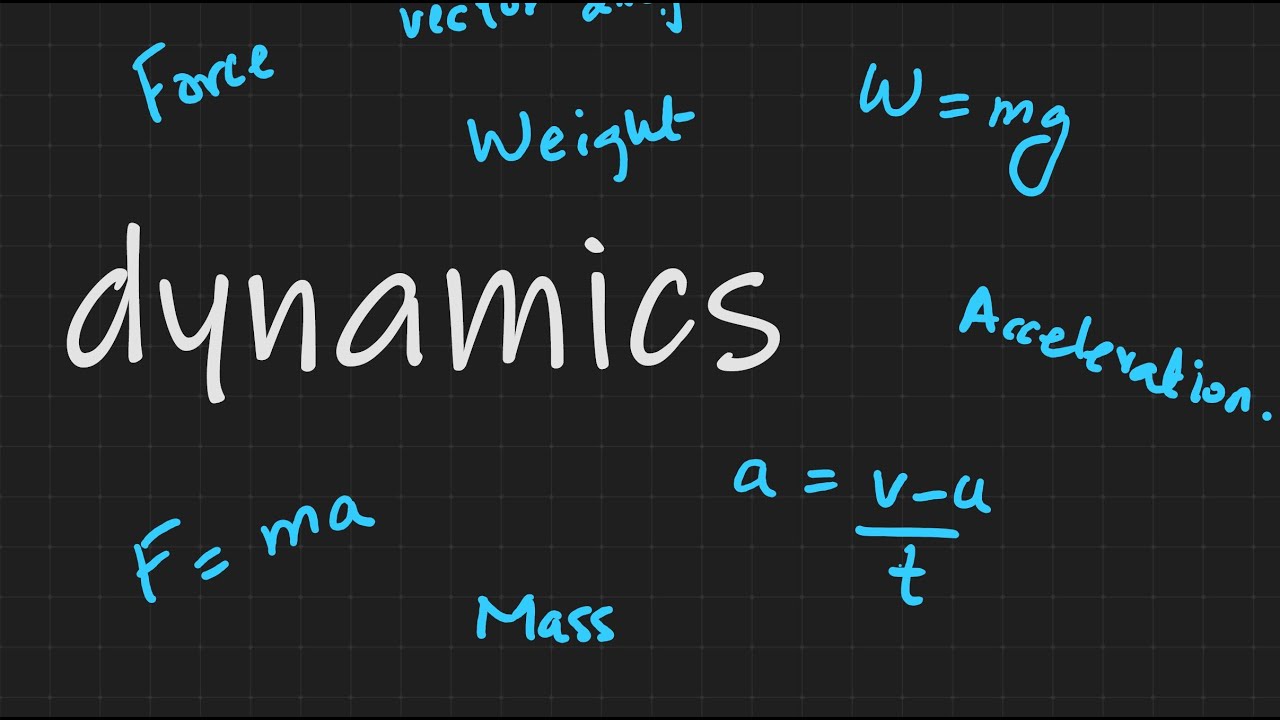
When it comes to understanding the intricate workings of the physical world, dynamics is a field of study that delves into the fascinating realm of motion and forces. It encompasses the laws and principles that govern how objects move and interact with one another. While dynamics is often associated with the realm of physics, it has far-reaching implications in various disciplines, from engineering and biomechanics to astronomy and even sports.
In this article, we will explore 20 surprising facts about dynamics that will not only deepen your understanding of the subject but also ignite your curiosity about the wonders of the physical world. From mind-boggling discoveries to intriguing applications, these facts will showcase the beauty and complexity of dynamics.
Key Takeaways:
- Dynamics helps us understand how things move and interact, from planets in space to the behavior of tiny particles. It’s like a superpower that lets us unravel the mysteries of the universe!
- By studying dynamics, scientists and engineers can design safer buildings, improve technology, and even explore the secrets of the cosmos. It’s like a key that unlocks endless possibilities in science and innovation!
Dynamics is a branch of physics that studies the motion of objects and the forces that cause them to move.
Dynamics plays a crucial role in understanding how objects interact with each other and how they respond to external forces.
The study of dynamics involves analyzing the motion of objects in terms of displacement, velocity, acceleration, and the forces acting upon them.
By studying these factors, physicists can determine the causes and effects of motion, providing valuable insights into the workings of the natural world.
Isaac Newton’s laws of motion form the foundation of classical dynamics.
Newton’s laws describe the relationship between an object’s motion and the forces acting upon it. They are still widely used today to analyze the behavior of objects.
Dynamics is not only limited to objects on Earth, but it also applies to celestial bodies.
Scientists use dynamics to study the motion of planets, moons, comets, and other objects in space, helping us understand the complexities of the universe.
Dynamics can explain why a ball rolls downhill, why a rocket lifts off, and even why a pendulum swings back and forth.
It provides the framework for understanding a wide range of phenomena, from the everyday to the extraordinary.
One of the key concepts in dynamics is the principle of conservation of momentum.
This principle states that the total momentum of a system remains constant if no external forces act upon it. It has wide-ranging applications in many areas of physics.
Dynamics is essential in the field of engineering, as it helps design structures and machines that can withstand forces and function properly.
Engineers use dynamics to analyze the stresses and strains on buildings, bridges, airplanes, and other structures, ensuring they meet safety standards.
The study of fluid dynamics focuses on the motion and behavior of fluids, such as air and water.
It is particularly relevant in understanding weather patterns, ocean currents, and the aerodynamics of vehicles and aircraft.
Quantum dynamics is a branch of physics that deals with the behavior of particles at the atomic and subatomic level.
It uses mathematical models, such as Schrödinger’s equation, to predict the probabilities of various outcomes in quantum systems.
Chaos theory, a subset of dynamics, studies systems that exhibit sensitive dependence on initial conditions.
This means that even small changes in the starting conditions can lead to dramatically different outcomes over time. It has applications in weather forecasting and complex systems analysis.
Dynamics is not limited to objects with mass but also applies to electromagnetic fields.
Electromagnetic dynamics helps explain the behavior of electricity, magnetism, and light, allowing us to understand and harness these phenomena for various applications.
The concept of “dynamical systems” refers to a set of mathematical equations that describe the time evolution of a system.
These equations can exhibit a wide range of behaviors, from stable and predictable to chaotic and unpredictable.
Computational dynamics involves using computer simulations to model and analyze complex systems that are difficult to study through traditional analytical methods.
It allows scientists to gain insights into the behavior of dynamic systems in various fields, such as biology, ecology, and economics.
Classical dynamics breaks down at the extremes of scale and velocity, leading to the need for theories like general relativity and quantum mechanics.
These theories provide a more comprehensive understanding of the universe at the cosmological and subatomic levels.
Brownian motion is a phenomenon in dynamics where small particles exhibit random movements due to collisions with surrounding particles.
It was first observed by Robert Brown in 1827 and played a crucial role in confirming the existence of atoms.
Dynamics is crucial in understanding the motion of celestial bodies, including the formation of galaxies, the motion of stars, and the behavior of black holes.
It allows scientists to unravel the mysteries of the universe and explore phenomena far beyond our everyday experience.
The study of fluid dynamics has applications in various engineering fields, such as designing efficient propulsion systems for spacecraft and optimizing fuel consumption.
Understanding how fluids behave under different conditions helps improve the efficiency and performance of many technologies.
Dynamics is not only limited to physical objects but also plays a significant role in modeling and understanding biological systems.
Biomechanics, for example, uses principles of dynamics to study the mechanics of human movement and the behavior of biological organisms.
Dynamics provides essential insights into the behavior of waves, including sound waves, electromagnetic waves, and even quantum waves.
It helps explain phenomena such as interference, diffraction, and resonance, leading to advancements in fields like telecommunications and quantum computing.
The exploration of dynamics continues to advance our understanding of the universe and has practical applications in various fields, from engineering and medicine to climate science and astrophysics.
By unraveling the mysteries of motion and forces, dynamics empowers us to create, innovate, and explore the world around us.
Conclusion
In conclusion, dynamics is a fascinating branch of physics that deals with the motion of objects and the forces that cause these motions. It plays a crucial role in understanding how things move and interact in the world around us. Through studying dynamics, we can gain insights into the principles that govern the behavior of celestial bodies, as well as the mechanics of everyday objects.Through this article, we have delved into 20 surprising facts about dynamics, ranging from astonishing discoveries to intriguing applications. From the concept of inertia to the principles of projectile motion and the effects of friction, dynamics offers a wealth of knowledge that continues to shape our understanding of the physical world.By exploring these facts, we have witnessed the beauty and complexity of dynamics. Whether you are an avid physics enthusiast or simply curious about the laws that govern the universe, dynamics offers a captivating journey into the realm of motion and forces.
FAQs
1. What is dynamics in physics?
Dynamics in physics is the branch of science that studies the motion of objects and the forces that cause these motions. It focuses on understanding the principles behind how things move and interact in the physical world.
2. What are some key concepts in dynamics?
Key concepts in dynamics include Newton’s laws of motion, inertia, forces such as gravity and friction, momentum, and energy. These concepts form the foundation to explain and predict the motion of objects.
3. How does dynamics relate to everyday life?
Dynamics is fundamental to understanding everyday phenomena, from the motion of vehicles and the flight of birds to the behavior of objects in sports and amusement park rides. It helps explain why objects fall to the ground, why a ball bounces, and how different forces impact our daily activities.
4. What are some applications of dynamics?
Dynamics has numerous applications in various fields, including engineering, architecture, aerospace, and biomechanics. It is used to design efficient structures, optimize vehicle performance, simulate fluid dynamics, and analyze the movements of the human body.
5. Why is dynamics important?
Understanding dynamics is essential in explaining the behavior of physical systems and predicting their outcomes. It provides the tools and principles to solve complex problems, improve technologies, and advance our understanding of the physical world.
Dynamics enthusiasts, your curiosity doesn't have to end here! Explore the fascinating world of General Dynamics, where cutting-edge technology meets military might. Population dynamics hold surprising secrets about how societies grow, change and interact. For those seeking a deeper understanding of the mathematical underpinnings of chaos and order, Birkhoff's Ergodic Theorem is a must-know. Each topic offers a unique perspective on the forces that shape our world, from the microscopic to the cosmic. So, which captivating rabbit hole will you dive down next?
Was this page helpful?
Our commitment to delivering trustworthy and engaging content is at the heart of what we do. Each fact on our site is contributed by real users like you, bringing a wealth of diverse insights and information. To ensure the highest standards of accuracy and reliability, our dedicated editors meticulously review each submission. This process guarantees that the facts we share are not only fascinating but also credible. Trust in our commitment to quality and authenticity as you explore and learn with us.


